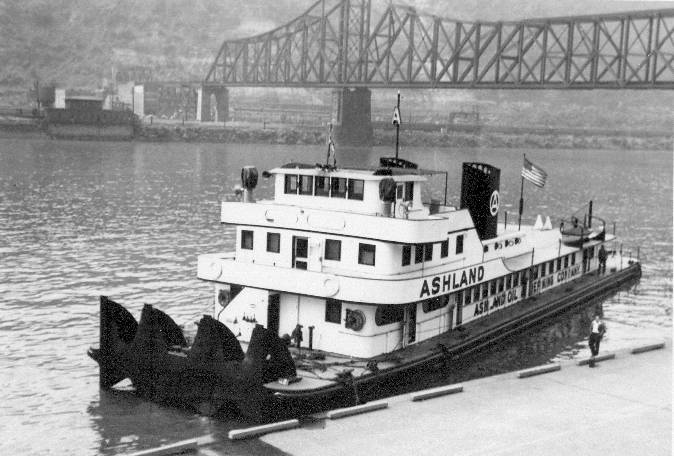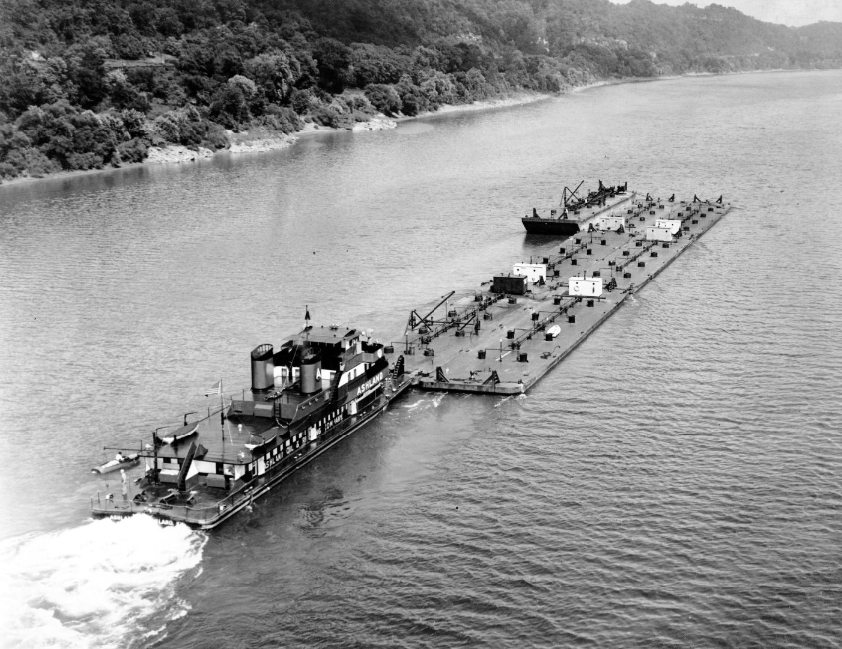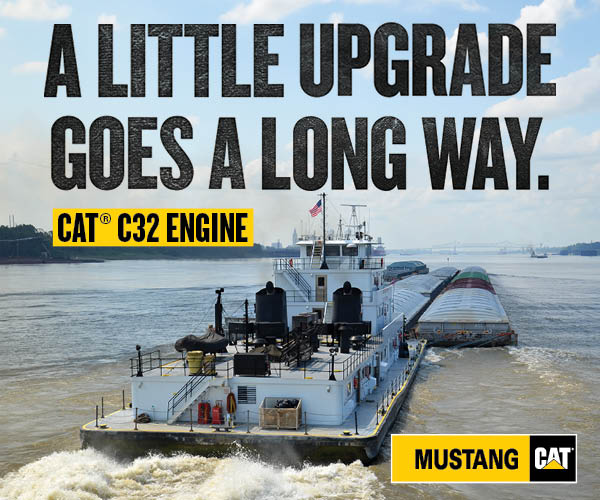It is hard to imagine today, given the plethora of communications technology available to towboats and company office personnel, but there once was a time none of that existed. Towboats communicated with each other and with locks and docks by whistle signals. To reach the office while in transit, a phone call would be made from a lock, or the yawl would be rowed ashore at some spot likely to have a phone.
Radios and cell phones were still years or decades away in December 1942.
In late December 1942 and early January 1943, Ashland Oil & Refining Company (AO&R) “lost” one of its largest towboats for several days. The late Robert L. Gray, long in the AO&R marine department, saved the following letter from files being discarded during a move of the corporate offices in the early 1970s. The late Robert E. “Bob” Kennedy, who then authored the Upper Ohio news column in The Waterways Journal, wrote about it in the July 8, 1978, issue of the magazine. It may take more than one column to cover the letter and particulars about the boat involved.
AO&R, founded in 1924 by Paul G. Blazer, was very dependent on river transportation and had begun building a fleet of diesel towboats in 1936, beginning with the 300 hp. Senator Combs (WJ, October 10, 2022). It was followed by the much larger 1,150 hp. Jim Martin in 1940 (WJ, April 29, 2024). Then, in 1941, the largest vessel yet was added to the fleet. This was the 1,610 hp. mv. Ashland. A.M. Deering designed the Ashland, which was built in Chicago by the Calumet Shipyard and Dry Dock Company. The steel hull measured 145 feet by 31 feet, and the vessel was powered by Fairbanks-Morse seven-cylinder model 37E diesels.

Noted riverman and historian Capt. Frederick Way Jr. spent most of his career on steam packets and excursion boats, but during World War II he worked aboard the towboats of Ashland Oil. Capt. Way was serving as master of the Ashland when it departed Kenova, W.Va., and headed up the Ohio River with a tow of gasoline on December 27, 1942. The events that ensued are best left to the letter he wrote to Ashland marine superintendent M.C. Dupree, written in his own inimitable style:
January 8, 1943
SUBJECT: FLOOD OF 1943
Dear Mr. Dupree:
If you have read a recent issue of “The Saturday Evening Post,” you doubtless saw the story about the greatest mystery which ever confronted Dan Willard, late president of the B&O Railroad; he lost a whole train one time—utterly disappeared somewhere between Parkersburg (W.Va.) and Zanesville (Ohio).
It wasn’t on the track, and nobody could find it. There is something of a parallel in the story of the m.v. ASHLAND for the past two weeks—we have been “among the missing,” and this letter is to sort of acquaint you with the fact that Ashland Oil still does own a boat named ASHLAND, and she is still in service and accounted for—at long last. So read this letter at your leisure; nothing in it which needs to be done, or demands attention—it’s an account of what happened to your boat and crew during the late high water which now is called the “Greatest December Flood in the History of the Ohio River.” Only it was a January flood as you will see.
We left Kenova with six barges of gasoline and oil at 7:25 a.m. on December 27, 1942, after a hectic night of making up tow in a rain fog (during which time I took a barge out to drift it, got lost, and spent an hour getting back to the landing), and the day was fair and warm, and we settled down to the hum-drum chug-chug of getting to Pittsburgh with no thought of anything out of the ordinary in store. The stage of the river at Lock 28 was 25.7 and falling—we knew we would have to double trip at Gallipolis Dam, which we did, and wisely so, and got through and were above there at 11:30 that night.
I got up at 5:30 a.m. on the morning of December 28 with the boat laid up for a rain fog at Campaign Bend—above Point Pleasant. It was raining a fine, misty rain, and continued warm. The fog hung on until 10 a.m., when we got out and going, and the Jones & Laughlin towboat TITAN [note: this was the steam sternwheeler, not the later diesel prop boat] came along, and we followed her up the river. Presently the rain fog started to rise again; all we could see of the TITAN was her one smokestack, but we followed that, and sloshed along, starting, stopping, fooling, blowing fog whistles and keeping the engineers busy ringing bells until 4:20 p.m. [note: this boat was powered with direct reversing engines that had engine room control, and the engineers had to start, stop and adjust speed to the pilot’s orders by engine room telegraph] when we got to Mason City, W.Va., and couldn’t see the head of the first barge in tow, so decided we had better tie up there. Fog, fog, fog. Rain beat down all day. I called Bill Glover up at 8 p.m. and asked him—just on suspicion—if there was any big water coming from above. The weatherman had informed him that a ONE FOOT rise was coming out of the Allegheny River and an equal amount out of the Monongahela. So we went to bed.
To be continued.




